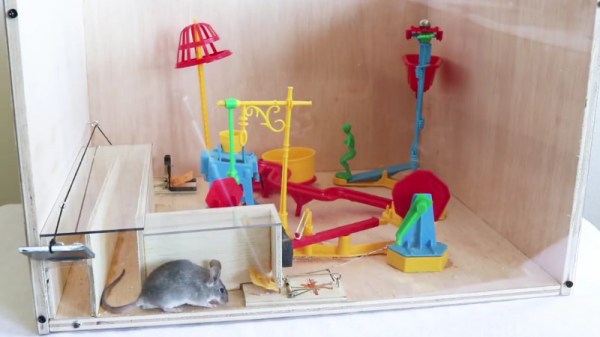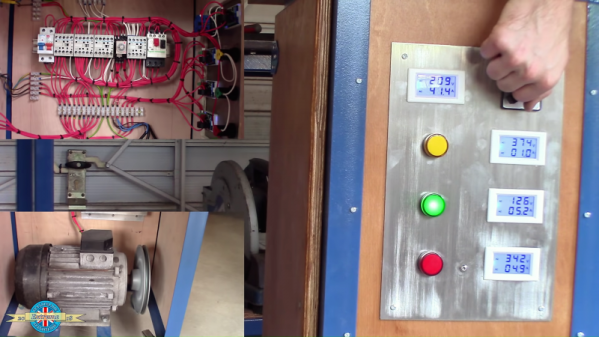Just when you thought you had explored all the weird stuff on YouTube, along comes [Shawn Woods] with his channel dedicated to testing different types of mouse traps. His weekly videos demonstrate the construction and ultimate effectiveness of everything from primitive traps that can be made in the field from sticks and rocks to 3D printed creations sent in from viewers. But his latest video might just be the weirdest one yet, as he found a way to use the classic “Mousetrap” board game to capture an actual rodent.
 Well, sort of. For one, [Shawn] admits the “trap” is completely impractical and is just for fun. Which should be pretty obvious considering the thing is enclosed in a box the size of a small refrigerator. Second, the lucky rodent that gets to test drive this Milton Bradley-powered gadget is actually the family’s pet chinchilla which is obviously rather calm and we dare say accustomed to these sort of shenanigans.
Well, sort of. For one, [Shawn] admits the “trap” is completely impractical and is just for fun. Which should be pretty obvious considering the thing is enclosed in a box the size of a small refrigerator. Second, the lucky rodent that gets to test drive this Milton Bradley-powered gadget is actually the family’s pet chinchilla which is obviously rather calm and we dare say accustomed to these sort of shenanigans.
The key to the whole contraption comes via two traditional mousetraps, one on either end of the game’s more fanciful rendition of the same device. The first trap is used to pull the crank which gets the board game going when the mouse steps on the pad (a piece of wood with padding prevents the bar from actually hitting the animal). The game goes through its nostalgic routine featuring metal balls rolling down tracks and figurines on jumping boards, eventually triggering the second real mouse trap. In this case, the trap pulls a rope which closes a door at the opening of the box.
Assuming your target rodent is very patient and not startled by the cacophony of plastic machinery, the whole thing works perfectly. To use the parlance of his channel, this is what’s known as a “Live Catch” trap as it doesn’t hurt the mouse and lets you easily remove them after the fact. Which is the least you could do after humiliating it like this.
While likely the most unique, it surely isn’t the only mouse trap we’ve ever covered here at Hackaday. This clever soda bottle trap can be built cheaply and easily, but if you want something expensive and complex you can always use a Raspberry Pi.
[Thanks to Pete for the tip.]
Continue reading “Mouse Trap Game Used As An Actual Mouse Trap” →














